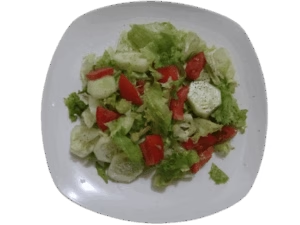TABLE OF CONTENTS
Walking is an activity we do every day, even if it is just from our sofa to the fridge. But is walking as a form of workout better than going to the gym? Not really! And I would not equate one more superior to the other as we choose how we workout based on many factors which include our resources (financial or otherwise), and daily obligations.
So, if you are not able to obtain a gym membership, you can still lose weight, tone your body and generally improve your overall physique and health by just walking. However, how you walk and for how long, will of course dictate the best results, both in the short and long term.
In addition, walking has many proven scientific benefits. These include weight loss, improved cardiovascular health, improved blood pressure and blood sugar as well as stronger bones (bone mineral density) and brain health (Erickson, et. al, 2010; Consumerreports.org). As such, walking is an exercise routine worth including in your workout plan. You can read more about creating a workout plan or program here.
The Discussion
Sometimes we may view walking as a ‘non-exercise’ as it doesn’t look seemingly glamorous like running on a treadmill or lifting those heavy-duty weights at the gym. However, it is considered a low-impact workout, in that, it creates less stress on the joints while still improving one’s endurance, posture and circulation. As such, as we have pointed out earlier, it is a very effective way to not only lose weight but to promote a healthier lifestyle.
In addition, it is an exercise that requires low-intensity endurance and is cited to have the potential to improve one’s physical strength and circulatory function, particularly in middle-aged women or older people in general (American College of Sports Medicine, 2000).
One of the greatest things about walking especially for me is just being outside and enjoying nature. Walking also helps at times to redefine my day. Therefore, if I was having a down day, after walking, I usually not only feel energized but also have a more positive outlook, even forgetting the nuances of that particular day. As such, research has shown that walking helps to calm the mind and enhance mood (Hanson & Jones, 2015).
Further, walking is one of those activities that easily drives you to work at your own pace and according to your body’s needs. No need to try to go fast if your body is just not up to it. Further, it is one of those health remedies that will cost you nothing but will certainly contribute to your overall happiness and peace of mind, especially when the pounds come falling off, and rightfully so!
Research also indicates that regular physical activity plays a role in the development of chronic disease and premature death. Regular physical activity can help in the prevention of cardiovascular disease, cancer and diabetes (Warburton et. al, 2006).
For this article, we will look at how you can include walking as part of your fitness and weight loss strategy to get in shape as well as to reap its other myriad benefits. This includes starting slow but being consistent, increasing the pace as you go along, taking it uphill, performing interval walking and using dumbbells. So, let’s talk!
Five(5) ways to walk for weight loss
- Start slow but be consistent
- Increase the pace – Brisk is the key!
- Do interval walking (HIIT walking).
- Go uphill – every now and then.
- Do it with weights.
Start slow but be consistent.
With all other physical activities, the best way to get the optimal result and to do it for the long term is to start slow and gradually work your way up. This is particularly true for persons who have been sedentary. One of the main reasons is that you do not want to put too much stress on the body too quickly and too fast as this can lead to injuries. Injuries, which of course, could shorten your workout sessions as well as prevent you from working out for a while, thus, hampering any foreseeable progress.
Further, rushing into something or ‘overdoing it, especially in the initial stages, can lead to demotivation which can halt your workout programme not only in the short term but worse yet, in the long term.
Nothing is wrong with just doing 15-30 minutes on your first walking venture or in your first week. This will allow the body to ease into it and you will find yourself doing longer periods as your body becomes conditioned to 15 or 30 minutes. Moreover, if you are suffering from injuries or even joint or other bodily distress, this is the best way to get your body moving while strengthening the muscles and building a lifelong workout programme.
Increase the pace –Brisk is the key!
It is all good and well to walk slowly, especially when you are just starting out. But to reap the benefits of weight loss or even a toned physique, you must focus on increasing the pace. This though is dependent on your aim, as some people just like the idea of walking in the cool of the morning or evening and just viewing what is happening around them. It also helps with relaxing the mind while still burning calories, especially for persons who are overweight.
However, research has shown that people with a faster walking pace have a longer life expectancy than those with a slower walking pace as reported by researchers of the National Institute for Health Research (NIHR) in May 2019. As such, the research found that persons with a habitually fast walking pace had a long life expectancy across varying levels of fitness status – from underweight individuals to those who were considered morbidly obese. In addition, a faster walking pace was also associated with better waist circumference. Therefore, brisk walking is the key to longer lives and improved waistline.
Interval walking (Hiit walking).
High-intensity interval training (HIIT) has become a popular method of exercising due to its overall benefits to health and weight loss. ‘Hiit’ is simply a routine that involves a burst of speed followed by a period of rest so as to increase heart rate and then reduce it again (DOHIIT, 2017). It is actually a form of interval training or an intense cardiovascular exercise that typically lasts thirty (30) minutes and is based on one’s fitness level (DOHIIT, 2017).
Using the ‘HIIT’ technique in your walking routine can help you burn more calories as well as increase your endurance and speed (Kristian, et. al., 2014). So, you can walk slowly for a while, then briskly and fast for a minute or two and then back to a regular pace. You can do this a few times throughout your walking routine. Remember, interval walking doesn’t have to be an everyday part of your routine but a common occurrence in your fitness programme.
In addition, according to a study published in Diabetologia or the Journal of the European Association for the Study of Diabetes in 2014, interval walking (walking with alternative levels of intensity) is better than just walking at a constant speed. Research also shows other overall indications of good health as it relates to interval walking. This includes improving glycemic control in individuals with type 2 diabetes when compared to just regular or continuous walking (Kristian, et. al., 2014).
Nonetheless, while traditionally, high-intensity exercise was not recommended for people with type 2 diabetes, the research shows that high-intensity exercise improves glycemic control when compared to low-intensity exercise. The research also found that the same holds for interval walking and its benefits to individuals with type 2 diabetes (Kristian, et. al, 2014). You can read more on how exercise, in general, can benefit your overall health and well-being in this article.
Go uphill – every now and then.
Walking on flat surfaces is usually most common among walkers and for good reasons – it puts less stress on the body, particularly the joints as well as promotes overall health and well-being. Nonetheless, sometimes walking uphill can allow you to add a bit more intensity that can benefit the body both in the short and long term. It’s like giving your body the incline effects as if you were on a treadmill in the cool of a gym. This can help to engage your glutes, and hamstrings and the downhill motion also helps to stabilize the body in general (Harvard Study, 2014).
In addition, research shows that both walking uphill and downhill reduce LDL (bad cholesterol) by about 10% (Harvard Study, 2014). However, the same research shows that only uphill walking reduces triglyceride levels which is an indicator of a risk factor for heart problems.
Surprisingly, the study shows that while downhill did not affect triglyceride levels, both uphill and downhill were effective at improving blood sugar and glucose tolerance. Other studies also confirmed that uphill walking can improve one’s glucose intolerance, especially in pre-diabetic men. Therefore, depending on one’s fitness level, this uphill and downhill walking may be useful in the prevention of type 2 diabetes as well as disorders in lipid metabolism (Philippe, et. al., (2017).
Nonetheless, caution must be exercised as it relates to constant uphill walking as this can affect the knees and ankle joints, something I have personally experienced when I used to walk regularly uphill, like 3-4 times per week. While I did lose and maintain weight, I did start to experience issues with my ankles and shins. After reducing the number of days and even giving uphill walking a break for a while, I stopped experiencing those issues.
Moreover, the hill I used to walk up was very steep, with hardly any flat surfaces, which only constantly added pressure on my knees and shins, so that is something you have to take into consideration as well. Also, if you do desire to take it uphill, you can try adding knee braces so as to stabilize the knee cap to reduce the likelihood of inflammation and irritation.
Do it with weights
It might look strange sometimes to see someone walking with dumbbells in the park or around the block. But, don’t be shy, do it anyway! Adding dumbbells to your walking routine adds a level of intensity that not only benefits the muscles of the arms but also helps in caloric burn. While this can be an effective addition to your walking routine, these are some of the things to bear in mind:
- Choose your weights wisely – Research shows that it is best to keep your weight between 2-3 pounds even if you believe you are fit as a fiddle. While it is not a heavyweight, it can make a considerable difference, not only in the short term but in the long run as well.
- Switch between dumbbells and ankle weights or practice weight loading. Weight loading is adding weights from the trunk or upper limb toward the ankle (Yang, 1996). According to Yang (1996), weight loading – is adding weights that correspond to 0%, 1% and 2 % of body weight on the lower limbs. Place on one’s body at 5 cm above the left and right ankle bones using sandbags with Velcro-type straps.
The study shows that adding weights of this nature significantly activates the gluteus medius muscle (Lee, 2013). The study also shows that weight loading increases one’s walking distance as well as provides stability to the lower limb due to the increased activity of the gluteus medius muscle. However, weight loading by 2% decreases distance because it acts as an inference factor by reducing the activity of the gluteus muscle during walking (Lee, 2013).
As such, it’s best to use light weights instead of heavy weights during your walking sessions. However, do not be afraid to add the weights in general.
Illustrative Summary
Here is an illustrative summary of five (5) strategies to include in your walking routine to lose weight and stay in shape.
Let’s Sum Up!
Walking as a form of exercise has become infamous, especially as people become more health-conscious and time and resources become scarce commodities. Walking is a low-intensity endurance workout that can help to improve one’s physical strength and endurance. However, to gain both the short and long-term benefits of walking, there are certain things you can do that can up ‘the anty’ and help you on your fitness journey.
These include, first and foremost, starting slow, especially if you have been sedentary for a while or carrying injuries. Then increase the pace as time goes by to burn more calories and lose weight, consider interval walking which also helps in weight loss and endurance, taking it uphill to engage the glutes and hamstring to reduce LDL (bad cholesterol) as well as triglycerides levels. Finally, do it with dumbbells to increase intensity as well as practice weight loading to activate the gluteus muscles.
So, see you in the park…Gone walk!
You can upgrade to running by reading this post – So, you wanna Run? Here, you will also find the benefits of running as well as how to do it for weight loss. You can also learn more about how exercising can positively impact both your physical and mental health:
- So you wanna run? Here are two (2) major health benefits and Five (5) ways to run for weight loss!
- Exercising and mental health – Is there a positive link?
Editor’s Note: Article updated: July 6, 2024.
- Hanson S, & Jones, A. (2015). Is there evidence that walking groups have health benefits? A systematic review and meta-analysis, British Journal of Sports Medicine 2015;49:710-715.
- “HIIT FAQ (Frequently Asked Questions about High-Intensity Interval Training)”. DOHIIT. Retrieved 2017-08-25.
- K.I. Erickson, C.A. Raji, O.L. Lopez, J.T. Becker, C. Rosano, A.B.Newman, H.M. Gach, P.M. Thompson, A.J. Ho, L.H. Kuller (2010). Physical activity predicts gray matter volume in late adulthood.
- Neurology Oct 2010, 75 (16) 1415-1422; DOI:10.1212/WNL.0b013e3181f88359 https://n.neurology.org/content/75/16/1415.long
- Kristian Karstoft et al. (2014). Mechanisms behind the superior effects of interval vs continuous training on glycaemic control in individuals with type 2 diabetes: a randomised controlled trial. Diabetologia, August 2014 DOI: 10.1007/s00125-014-3334-5. https://www.sciencedaily.com/releases/2014/08/140804202138.htm
- Lee, S.K, Jung, J.M, Lee, S.Y.(2013). Gluteus medius muscle activation on stance phase according to various vertical load. J Back Musculoskelet Rehabil, 26:159–161.
- Philippe, M., Gatterer, H., Eder, E. M., Dzien, A., Somavilla, M., Melmer, A., … Burtscher, M. (2017). The Effects of 3 Weeks of Uphill and Downhill Walking on Blood Lipids and Glucose Metabolism in Pre-Diabetic Men: A Pilot Study. Journal of sports science & medicine, 16(1), 35–43.
- Warburton, D. E., Nicol, C. W., & Bredin, S. S. (2006). Health benefits of physical activity: the evidence. CMAJ : Canadian Medical Association journal = journal de l’Association medicale canadienne, 174(6), 801–809. doi:10.1503/cmaj.051351.
- Yang, J.S. (1996). Physiological responses to walking exercise with added weight at different locations in normal subjects. Korean J Phys Educ. 1996;35:130–143.





